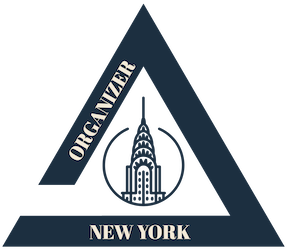
Tuesday, February 21, 2023
For well over a century, railroads have been an indispensable part of America’s economy, society, and way of life. Our rail system must be kept safe—safe for the workers who operate it, and for the communities that rely on it. Safety is USDOT’s top priority. That means ensuring each and every day that the freight rail industry is living up to their obligations to keep communities and workers safe; funding infrastructure projects to improve our nation’s rail network; and working with Congress to advance regulation in areas that need it.
In the early 2010s we saw a number of high-profile freight rail incidents across the U.S. and Canada, including one that left nearly 50 people dead. Those events led to the passage of significant new rail safety rules—over strong opposition from industry.
Since those changes, there has been real improvement; derailments decreased by 15%, and lives were certainly saved. But today, there are still over a thousand derailments every year—proof that the freight rail industry can and must do more. Committing to greater safety requires investing in human and physical infrastructure. Instead, in the intervening years the railroad industry has actively lobbied Congress to roll back or weaken some of these rules. And according to the chair of the Surface Transportation Board, since 2016, Class 1 railroads have cut their workforce by almost 30 percent. The Norfolk Southern derailment in East Palestine—which upended the lives of residents and raised fears in communities across the country that sit on or near freight rail lines—only underscores the urgency of making further progress on this issue.
USDOT is committed to using the full range of our authority, as well as the funding available to us from the Bipartisan Infrastructure Law, to improve safety on our railroads. Achieving the highest level of rail safety will also require active and continued partnership from Congress. And rail companies must also take urgent, dedicated action that includes not just complying with current standards but decisively putting the long-term safety of workers and communities ahead of short-term opportunities to supercharge profits.
“Profit and expediency must never outweigh the safety of the American people,” said U.S. Transportation Secretary Pete Buttigieg. “We at USDOT are doing everything in our power to improve rail safety, and we insist that the rail industry do the same – while inviting Congress to work with us to raise the bar.”
We are calling on Norfolk Southern and the entire freight railroad industry to act immediately to:
- Protect workers who spot safety issues from reprisal, by joining FRA’s Confidential Close Call Reporting Program. This program allows railroads and their employees to report unsafe events and conditions without fear of negative consequences from the FRA or reprisal from their employers. To date Amtrak, many commuter rail and short line companies are part of this program, but not a single Class I railroad participates. This must change immediately.
- Deploy new inspection technologies without seeking permission to abandon human inspections. The removal of human inspections has been a top priority for the rail lobbyists. Recent waiver requests around technology like Automated Track Inspection (ATI) have been framed by industry to set up a false choice between technology and human oversight. We need both to keep our nation’s railroads safe.
- Expedite the phase-in of safer (DOT 117) tank cars in advance of the Congressionally mandated 2029 deadline.
- Provide proactive advance notification to state emergency response teams when they are transporting hazardous gas tank cars through their states instead of expecting first responders to look up this information after an incident occurs. USDOT is also pursuing further requirements in this area, but railroads should not wait.
- Provide paid sick leave. A healthy and well-supported workforce is a safer workforce. This doesn’t have to wait for national negotiations—companies can come to terms individually with their labor unions. Some carriers are in the process of doing thishttps://www.cnn.com/2023/02/08/business/rail-unions-csx-deal-paid-sick-time/index.html. This Administration believes that all workers deserved paid sick leave.
USDOT will continue, and further enhance, its work on freight rail safety, including:
- Advancing the Train Crew Staffing Rule, which will require a minimum of two crewmembers for most railroad operations. This rule is intended to keep workers and communities safe. Research indicates that an increase in physical tasks and cognitive demands for a one-person crew could potentially lead to task overload or a loss of situational awareness that could cause an accident. Despite two-person train crews being industry standard, the rail industry has resisted being regulated on this front and pushed for crews of less than two people.
- Initiating a focused safety inspection program on routes over which high-hazard flammable trains (HHFTs) and other trains carrying large volumes of hazardous material travel.
- Initiating a focused inspection program of legacy tank cars and the shippers and railroads who have chosen not to upgrade to the safer tank cars (DOT 117).
- Deploying the resources from the Bipartisan Infrastructure Law under programs including the the Consolidated Rail Infrastructure and Safety Improvements (CRISI), the new Railroad Crossing Elimination Program and the Railroad Rehabilitation & Improvement Financing (RRIF) program among others to fund projects that modernize and improve rail tracks, eliminate at-grade rail crossings and improve rail safety.
- Pursuing further rulemaking, to the extent possible under current statute, on high-hazard flammable trains (HHFT) and electronically controlled pneumatic brakes (ECP).
Congress can strengthen rail safety by:
- Increasing the maximum fines that USDOT can issue to rail companies for violating safety regulations. The current maximum fine, even for an egregious violation involving hazard materials and resulting in fatalities, is $225,455. This is a rounding error for a company that reported an astonishing record annual operating income in 2022 of $4.8 billion and has posted operating margins approaching 40%.
- Following through on new bipartisan support to expand and strengthen rules governing high-hazardous shipments, including high-hazard flammable trains (HHFT), pushing past industry opposition.
- Following through on new bipartisan support to modernize braking regulations and increase the use of electronically controlled pneumatic brakes (ECP).
- Speeding up the phase-in of safer (DOT 117) tank cars to carry hazardous materials. Congress established a phase-in schedule under the 2015 FAST Act which gives owners of tank cars until 2029 to fully adopt stronger (DOT 117) tank cars. The original 2015 HHFT Rule required the phase-in by 2025. Congress can act now to speed, rather than slow, this important safety measure.
- Increasing funding to expand hazardous materials training for first responders.
Each of these steps will enhance rail safety in the United States. In the specific case of the Norfolk Southern derailment in East Palestine, NTSB continues to lead the safety investigation, and once the investigation is complete, its results will form the basis for future potential action and policy recommendations as well as all appropriate steps to hold Norfolk Southern accountable.
###
Official news published at https://www.transportation.gov/briefing-room/us-department-transportation-fact-sheet-steps-forward-freight-rail-industry-safety

